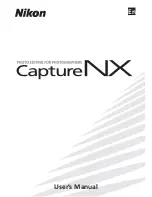
Event Management System/Logging
ExtremeWare XOS 10.1 Concepts Guide
109
The same example would appear as:
May 29 12:17:20.11 SNTP: <Warn:SNTP.RslvSrvrFail> tSntpc: (sntpcLib.c:606) The SNTP
server parameter value (TheWrongServer.example.com) can not be resolved.
Displaying Real-Time Log Messages
You can configure the system to maintain a running real-time display of log messages on the console
display or on a (telnet) session. To turn on the log display on the console, use the following command:
enable log target console
This setting may be saved to the FLASH configuration and will be restored on boot up (to the
console-display session).
To turn on log display for the current session:
enable log target session
This setting only affects the current session, and is lost when you log off the session.
The messages that are displayed depend on the configuration and format of the target. For information
on message filtering, see “Filtering Events Sent to Targets” on page 102. for information on message
formatting, see “Formatting Event Messages” on page 108.
Displaying Events Logs
The log stored in the memory buffer and the NVRAM can be displayed on the current session (either
the console display or telnet). To display the log, use the following command:
show log {messages [memory-buffer | nvram]} {events {<event-condition> |
<event-component>]} {<severity> {only}} {starting [date <date> time <time> | date
<date> | time <time>]} {ending [date <date> time <time> | date <date> | time <time>]}
{match <regex>} {chronological}
You can use many options to select the log entries of interest. You can select to display only those
messages that conform to the specified:
•
severity
•
starting and ending date and time
•
match expression
The displayed messages can be formatted differently from the format configured for the targets, and
you can choose to display the messages in order of newest to oldest, or in chronological order (oldest to
newest).
Uploading Events Logs
The log stored in the memory buffer and the NVRAM can be uploaded to a TFTP server. Use the
following command to upload the log:
upload log <ipaddress> <filename> {messages [memory-buffer | nvram] {events
{<event-condition> | <event_component>}}} {<severity> {only}} {starting [date <date>
time <time> | date <date> | time <time>]} {ending [date <date> time <time> | date
<date> | time <time>]} {match <regex>} {chronological}
Summary of Contents for ExtremeWare XOS 10.1
Page 12: ...12 ExtremeWare XOS 10 1 Concepts Guide Contents...
Page 15: ...Part 1 Using ExtremeWare XOS...
Page 16: ......
Page 20: ...20 ExtremeWare XOS 10 1 Concepts Guide ExtremeWare XOS Overview...
Page 32: ...32 ExtremeWare XOS 10 1 Concepts Guide Accessing the Switch...
Page 74: ...74 ExtremeWare XOS 10 1 Concepts Guide Virtual LANs VLANs...
Page 80: ...80 ExtremeWare XOS 10 1 Concepts Guide Forwarding Database FDB...
Page 112: ...112 ExtremeWare XOS 10 1 Concepts Guide Status Monitoring and Statistics...
Page 133: ...Part 2 Using Switching and Routing Protocols...
Page 134: ......
Page 174: ...174 ExtremeWare XOS 10 1 Concepts Guide Virtual Router Redundancy Protocol...
Page 184: ...184 ExtremeWare XOS 10 1 Concepts Guide IP Unicast Routing...
Page 202: ...202 ExtremeWare XOS 10 1 Concepts Guide Interior Gateway Protocols...
Page 216: ...216 ExtremeWare XOS 10 1 Concepts Guide Exterior Gateway Routing Protocols...
Page 224: ...224 ExtremeWare XOS 10 1 Concepts Guide IP Multicast Routing...
Page 225: ...Part 3 Appendixes...
Page 226: ......
Page 234: ...234 ExtremeWare XOS 10 1 Concepts Guide Software Upgrade and Boot Options...
Page 242: ...242 ExtremeWare XOS 10 1 Concepts Guide Troubleshooting...
Page 256: ...4 ExtremeWare XOS 10 1 Concepts Guide Index of Commands...
















































